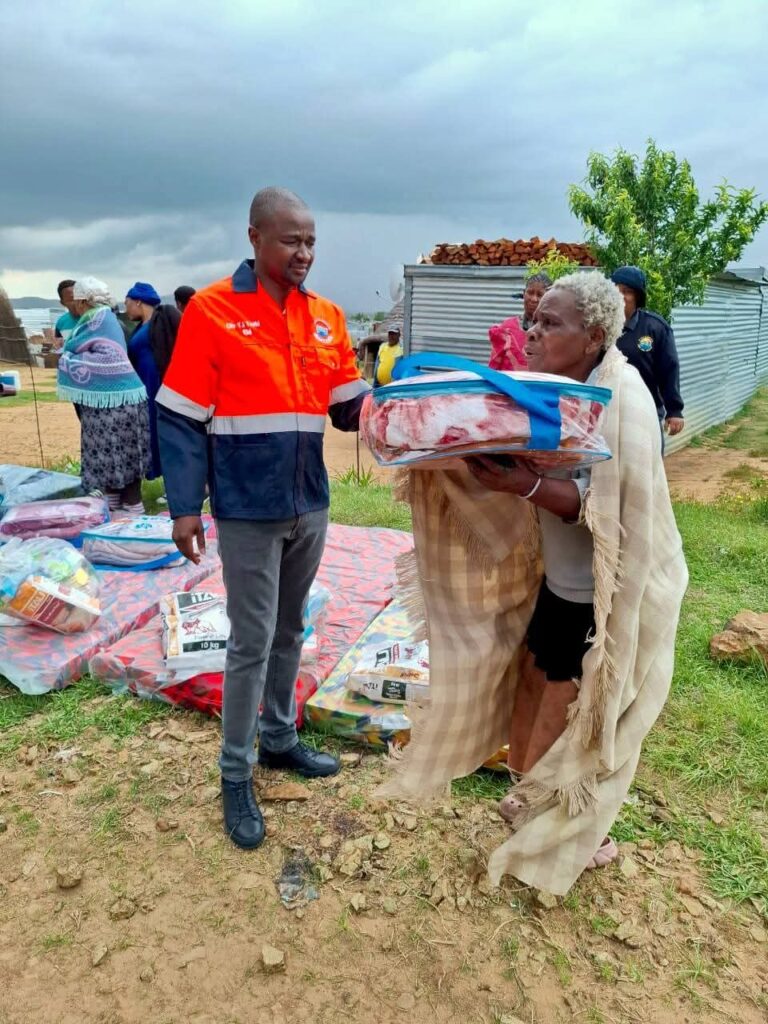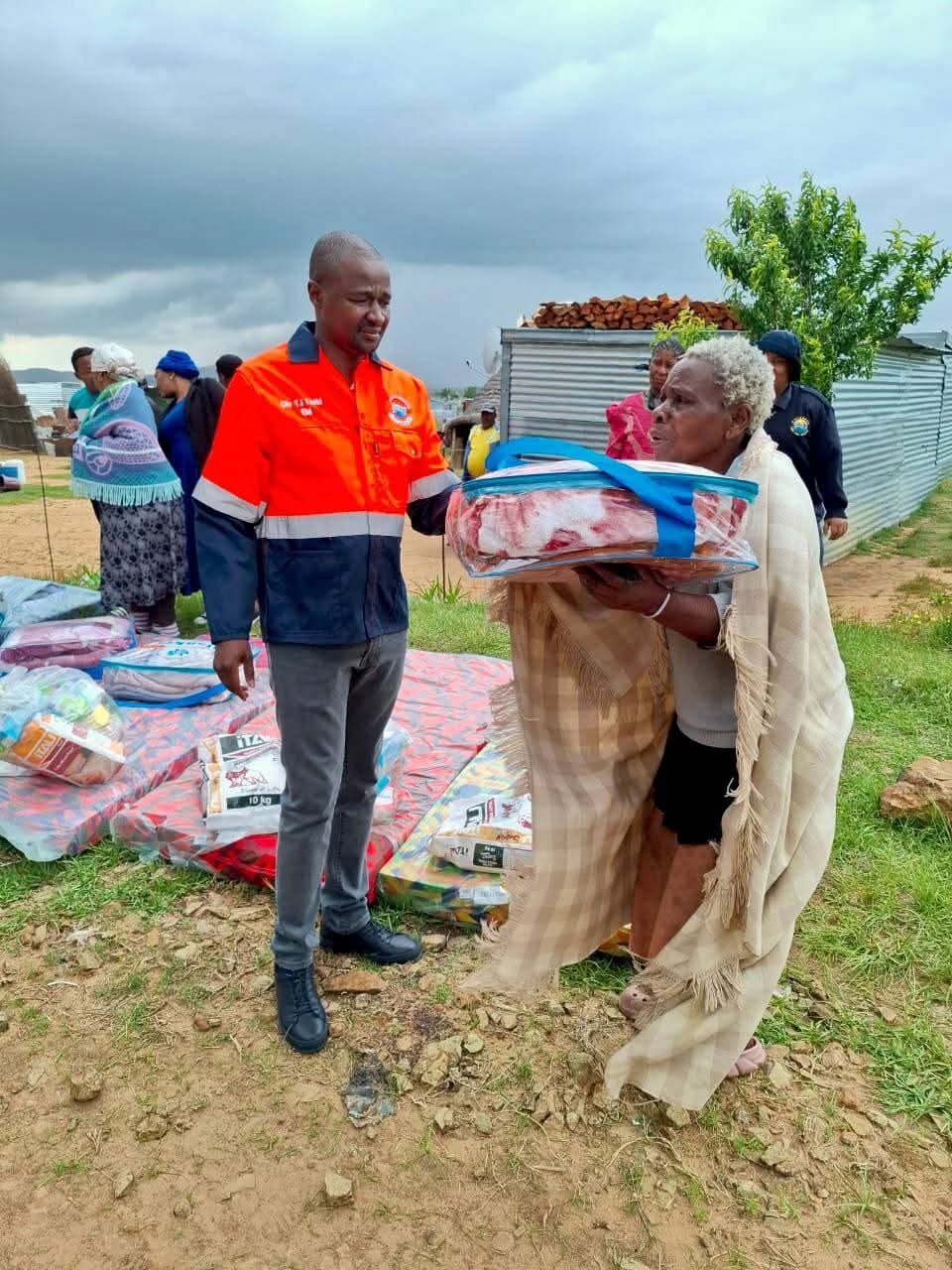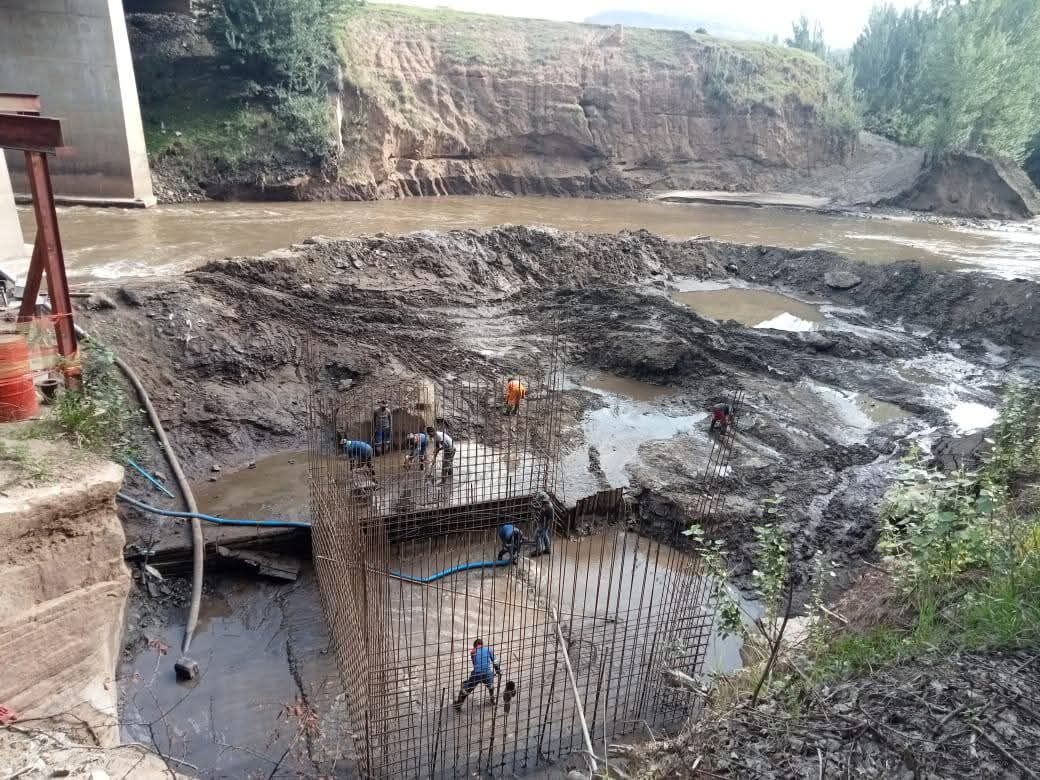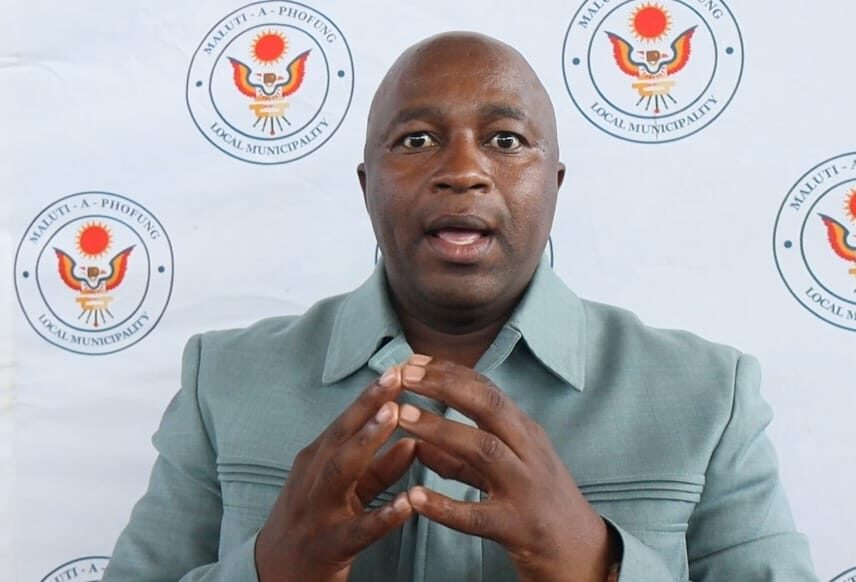By Emily Setona
BETHLEHEM– Dozens of families in Slabberts, Rosendal, and Mautse are rebuilding their lives after a violent windstorm tore through their communities over the first weekend of November, destroying homes and leaving several residents displaced.
In a swift response, the Dihlabeng Local Municipality, in partnership with the South African Red Cross Society, delivered emergency aid to the affected households. On Tuesday, 4 November 2025, executive mayor Tseki Tseki led the distribution of food parcels, blankets, and mattresses to families who lost their belongings.
A total of 23 families—12 in Slabberts and 11 in Rosendal—benefited from the municipality’s immediate relief programme.Mayor Tseki commended the quick collaboration between municipal officials and humanitarian partners, saying the intervention aimed to restore dignity and hope.
“Our communities are our responsibility. We could not stand by while families were left without shelter or basic needs. This partnership with the Red Cross was about compassion and action where it mattered most,” said Tseki.
The storm, which struck on Saturday, 1 November, ripped through homes and infrastructure across the three areas. Municipal teams were dispatched to assess the full extent of the damage and determine long-term recovery needs.
Thabo Mofutsanyana District Municipality executive mayor Conny Msibi, who joined the handover, praised the coordinated response.
“When disaster strikes, it is unity that brings hope. This is what leadership means—standing with our people during their most difficult times,” Msibi said.
Residents expressed gratitude for the support, saying it brought relief after days of uncertainty and loss.
Mayor Tseki pledged that Dihlabeng Municipality would continue working with provincial authorities to ensure all affected households received further assistance to rebuild.
“We remain committed to restoring stability and ensuring that no family is left behind,” he said.
The incident has once again highlighted the vulnerability of rural communities to extreme weather and the crucial role of local government in disaster response and recovery.



















